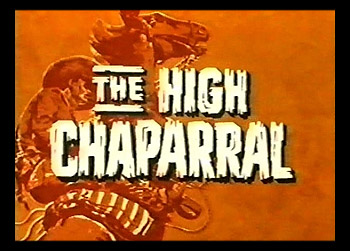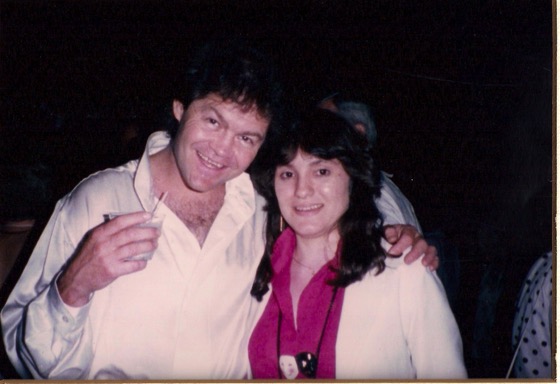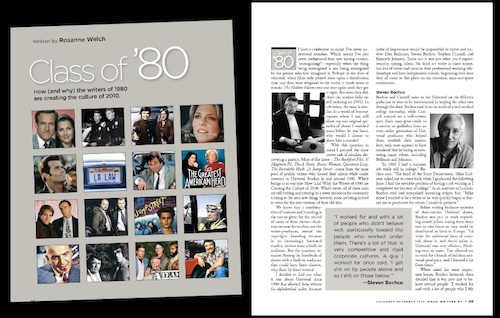Came across this in my Internet travels and I hadn’t seen it before. This is a very funky, caricature-style of the 4 lads and quite unlike anything else I have ever seen.
Click for larger image
On Screenwriting and Media with Dr. Rosanne Welch
Writing, Film, Television and More!
Came across this in my Internet travels and I hadn’t seen it before. This is a very funky, caricature-style of the 4 lads and quite unlike anything else I have ever seen.
Click for larger image
In her coverage of a day at the set of The Monkees, Gloria Malerba was able to show her (largely teen) readers how much hard work goes into filming a television show – and how many people are employed by such a hit show.
I particularly like the photo on the lower left of Davy Jones in costume taking “a last minute look at the script’ – a nice reminder that as often as we hear the show as ‘all ad-libbed’ – it was not. Writers conceived the characters and conflicts and then wrote dialogue for each of the regular stars.
Image: Big Glee: The Albert Bryan Bigley Archives – Click for larger image
Answering another friend’s Facebook post reminded me today of one of my favorite books of letters between writers is between Cheever and John Weaver.
I stumbled upon Glad Tidings: A Friendship in Letters : The Correspondence of John Cheever and John D. Weaver, 1945-1982 many years ago at a used bookstore and deeply enjoyed reading how these two writers discussed their work and the origins of their most famous projects.
Of course, Cheever was also writing to Harriet Weaver but the editors left her name off the title, so it’s also a good look at how the Weaver marriage operated (in the same way The Letters of S.J. Perlemnan became a look at the marriage of Dorothy Parker and Alan Campbell since he wrote so often to them).
What I enjoyed most was the inside look Cheever gave of coming to Hollywood when a studio adapted his story The Swimmer into a film – Weaver had much more experience living in Los Angeles as a writer of local histories so he helped Cheever navigate La-La-Land.
If you don’t know either of these writers, a selection of Cheever’s short stories, The Stories of John Cheever, won the 1979 Pulitzer Prize for Fiction (not too shabby) and John D. Weaver’s obituary in the Los Angeles Times tells you how important he was: “Weaver wrote two novels and eight nonfiction books, including one that helped change history: “The Brownsville Raid,” a 1970 book that led to the exoneration of 167 black soldiers who had been discharged without honor 64 years earlier.”
Both are well worth reading – as is Glad Tidings. Check them out.
In my last Summer in Cleveland, just weeks before I got married and moved to Los Angeles, The Monkees played as part of a large event at Playhouse Square in Cleveland.
My soon-to-be husband caught this photo of us during raucous after-party. This is a cropped version of a larger photo as Davy was literally surrounded by people during the entire event.

Day Jones, Rosanne Welch at Playhouse Square, Cleveland, Ohio, June 7, 1986
In memory of the anniversary of the loss of Davy Jones in 2012 I wanted to post this newscast by Diane Sawyer where she spoke of the news as “startling bulletin” which came across her desk in the newsroom that day (February 29, 2012). Sawyer then proclaimed “He is still that forever young and sunny singer from The Monkees who made more than one generation want to sing along.”
The question I ask in the book is why would a serious journalist (not merely an entertainment reporter) consider news of the death of a former teen idol ‘startling’ unless she, too, had once been among his fans? To me it speaks volumes about how he – and The Monkees – effected all our lives.
You can join The Monkees Discussion on my Why The Monkees Mattered Facebook Page
Today we thank Shonda Rhimes for bringing color blind casting to television when she casts a diverse array of ethnicities in lead roles on her shows. But she didn’t invent the idea. On our visit to the Autry Museum of the American West I was reminded of a show I used to watch on television but that disappeared too quickly (I didn’t then know why) and didn’t reappear in reruns as much as the more successful, longer-running program also created by the same writer (Bonanza).

The show I only vaguely remembered was The High Chaparral – the story of a Mexican woman married to a man of European descent (then controversially considered an inter-racial marriage) who owned a rancho in the West post the Civil War. I remembered it for its diverse cast and honest portrayal of the discrimination played out against minorities in the West.
Special Projects Archivist Mallory Furnier wrote the blog post, “Casting Actors as People” highlighting the archives of The High Chaparral in the David Dortort Archive, where she noted:
“Though The High Chaparral faced untimely cancellation, its four seasons embodied a step away from tired, inaccurate stereotypes and a movement toward greater respect for actors and characters, regardless of race. As a June 16, 1970 NBC memo instructed, “let’s cast actors to play people and, in so doing, give the ‘minorities’ a break.”
In a second blog post, “Finding Aids and Places”, Furnier discussed her trip to the Old Tuscon Studios in Arizona, site of some of the exterior filming of the show.
As always, I found it fascinating to wander around in the papers (old, handwritten first drafts of scripts, typed rewrites ready for production meetings, cast lists, shooting schedules, etc) and see the inside ideas of a show I had only seen from the outside all those years ago.
One of the papers was even a 1971 letter to Dortort from then U.N. Representative George H. W. Bush saying he sympathized with the producer over the cancellation of such a quality show and would do what he could to communicate that to those who had made that decision. Fascinating.
Listen to the High Chapparal Theme Song.
In my last Summer in Cleveland, just weeks before I got married and moved to Los Angeles, The Monkees played as part of a large event at Playhouse Square in Cleveland.
My soon-to-be husband caught this photo of us during raucous after-party. I’m still not sure how we got his undivided attention, even for a moment, among the crowd.

Micky Dolenz, Rosanne Welch at Playhouse Square, Cleveland, Ohio, June 7, 1986
“Sarah Kemble Knight (April 19, 1666 – September 25, 1727) was a teacher and businesswoman, who is remembered for her diary of a journey from Boston, Massachusetts Bay Colony, to New York City, Province of New York, in 1704–1705, a courageous and unusual adventure for a woman to undertake on her own.” — Wikipedia
Learn more about Sarah Kemble Knight in Woman in American History
If you’re a fan of 80s TV, check out my interview with Kenny Johnson, Steve Bochco, Don Bellisario and Stephen J. Cannell in this month’s Written By Magazine — “Class of 80”

We talked about all their signature shows that have been ‘re-imagined’ and their days as staff writers at Universal. The issue has a wonderful memorial to Mr. Cannell as well. I spoke to him a couple of months before he passed away with no knowledge that he was ill. It lead to the magazine collecting several pages of tributes from other writers he worked with across the years – a real time-capsule of television in one of its heydays.